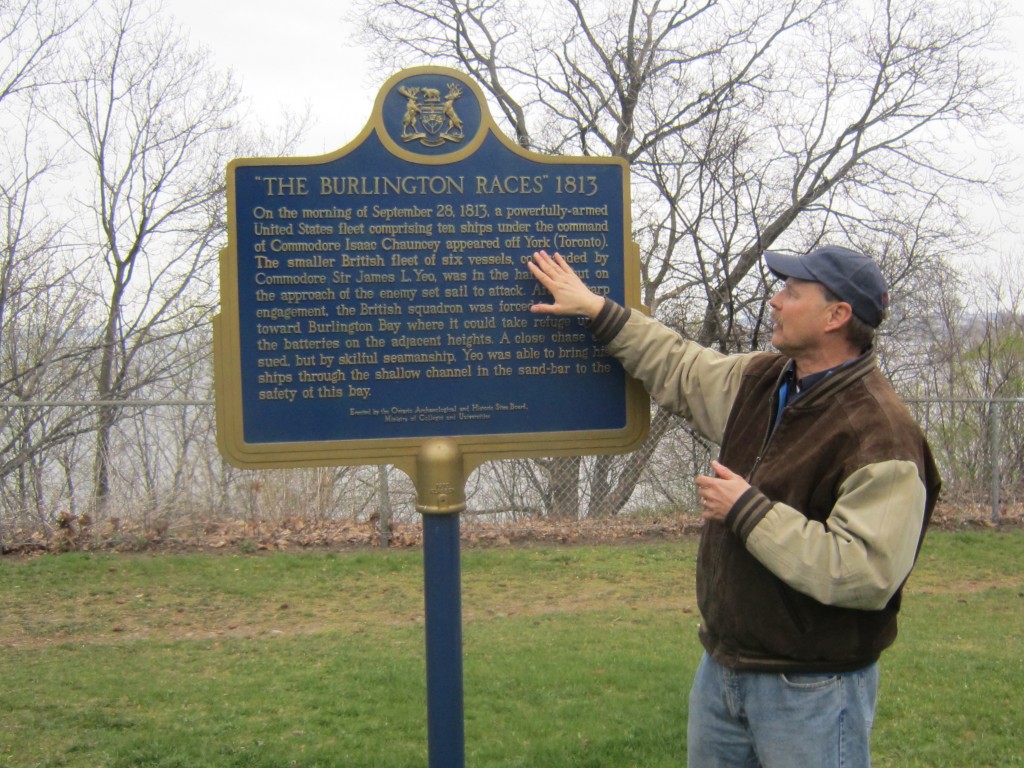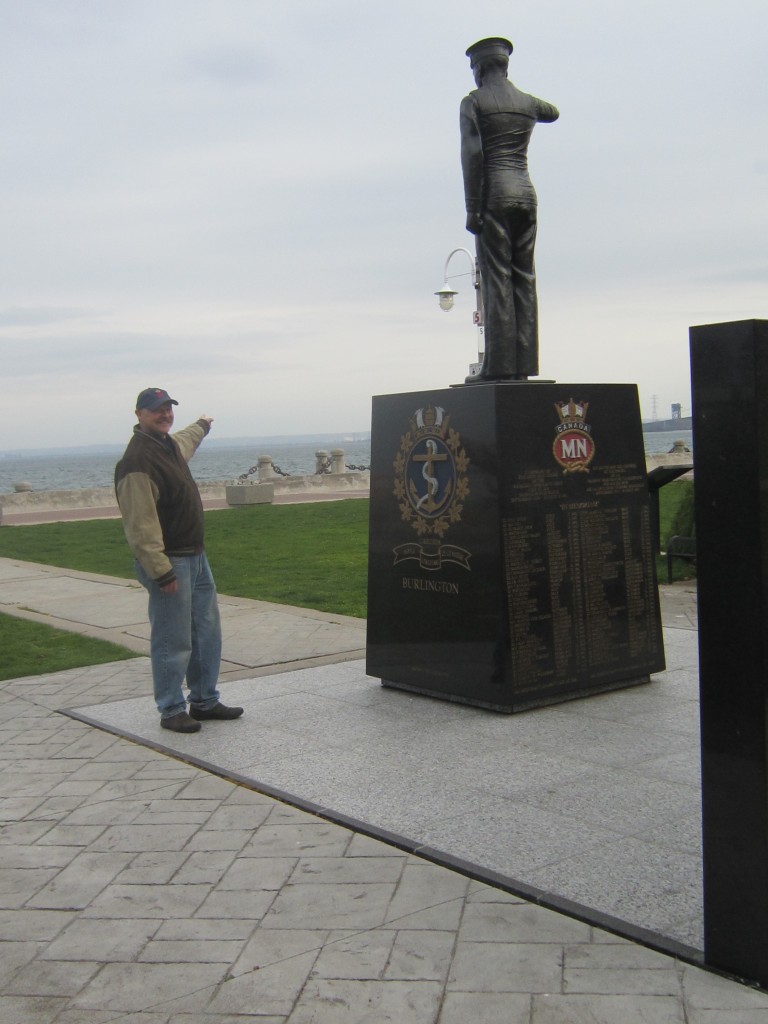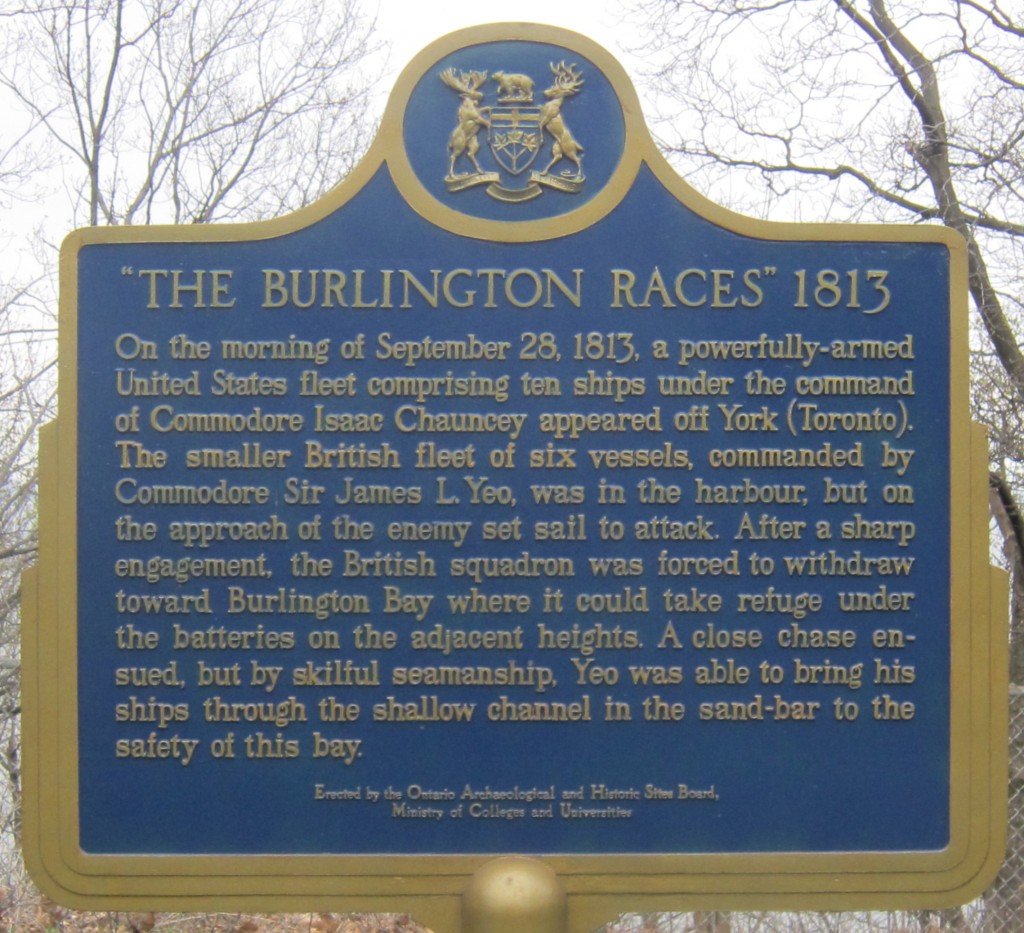By Pepper Parr
BURLINGTON, ON. If there was ever an example of one man making a difference – look no further than Rick Wilson, a Burlington resident and a member of the Heritage Advisory Committee as well as a serious history buff.

This federal government plaque, erected at Burlington Heights, overlooking Burlington Bay, got it wrong and Rick Wilson wants it changed and the public record corrected.
Wilson works in the field of finance but his passion is history and when he came across what he believed to be a significant error in the way local history was being told he mobilized and did he best to right the wrong.
Those efforts will bear fruit on Saturday morning when the city unveils a plaque that tells the full and true story of an event that has come to be known as the Burlington Races, which sounds like a sporting event but there was nothing sporting about the battles between the British and the Americans on Lake

Rick Wilson isn’t certain as to exactly where Commodore Yeo situated his ship but he believes it might have been close to the foot of Brant Street. That location would certainly have given the British ships the angle and the advantage they needed to defeat the American ships and force them further west along the Lake.
Ontario, right in front of Spencer Smith Park.
The battle that will be commemorated with the plaque took place on September 28, 1813 when six-ship British flotilla out-manoeuvred a fleet of ten American warships and took anchor in a highly defensible position off the shore of modern-day Burlington. The battle was described by eye witnesses as a sort of military yacht race where the British and Americans jockeyed for superior position – hence The Burlington Races.
The battle was a turning point in the War of 1812 as the British asserted naval dominance over the Great Lakes.

Commodore Yeo’s ships never entered Burlington Bay. Records prove that the water was far too shallow of any ship to enter to Bay. The real victory for Rick Wilson will be when this plaque in Hamilton is taken down and a correct plaque put in place. For the time being the plaque in Burlington will be the one to tell the true story.
“I believe it is important to celebrate Burlington’s rich history,” says Burlington Mayor Rick Goldring. “Our city was a strategic location during the War of 1812. The Burlington area was known as a safe haven, a place of trade, a crossroads, and a resting point. Contributions by local citizens and volunteers were important and we are proud to acknowledge their efforts with this plaque.”
The plaque unveiling takes place near the west compass in Spencer Smith Park at 10 a.m. on Saturday, Sept. 28, 2013 – 200 years to the day of the battle – and will feature an on-shore celebration of re-enactors in period costume.
It is rather unfortunate that city hall could not find it within themselves to recognize Wilson’s efforts. For the past three years, perhaps more Wilson has bent the ear of anyone who would listen to explain where the historians got it wrong. If anyone pulls a velvet cord to reveal the plaque that tells a magnificent story – it should be Rick Wilson.
The wording on the plaque will read as follows:
After a United States naval victory on Lake Erie by Commodore Perry on September 10, 1813, a powerful American fleet of ten ships under Commodore Isaac Chauncey appeared off York (Toronto) on the morning of September 28, 1813. Its objective was to gain control of the Great Lakes or at least create enough of a diversion to allow American troops from the Niagara frontier to slip down the St. Lawrence River to attack Montreal.
A smaller British fleet of six warships under Commodore Sir James Yeo was in the harbour and quickly set sail to attack. In a sharp engagement the British flagship, HMS Wolfe, suffered sail and mast damage. With limited manoeuvrability, the Wolfe led the British flotilla to safe anchorage in view from the shore of present-day Burlington.
Yeo anchored his squadron with springs (heavy ropes) on the (anchor) cables, close to shore and pivoted his ships to present powerful broadsides from a strong compact defensive unit that could not be flanked. The Americans recognized the stronger British position and withdrew to the protection of Fort Niagara, leaving the Royal Navy firmly in control of the lake.
By out-manoeuvring the Americans that day, Yeo saved the fleet and preserved a formidable British presence on Lake Ontario – key to the defences of Upper and Lower Canada.
Eventually, Yeo’s fleet helped capture Fort Oswego in May 1814 and also delivered General Drummond with 400 British reinforcements and supplies to the Niagara frontier in July 1814 to defeat the Americans at Lundy’s Lane, the last invasion of Canada.
At this point we don’t know where Rick Wilson will be in the civic ceremony – but we certainly know where he should be.
















